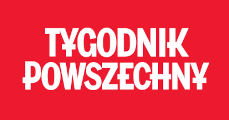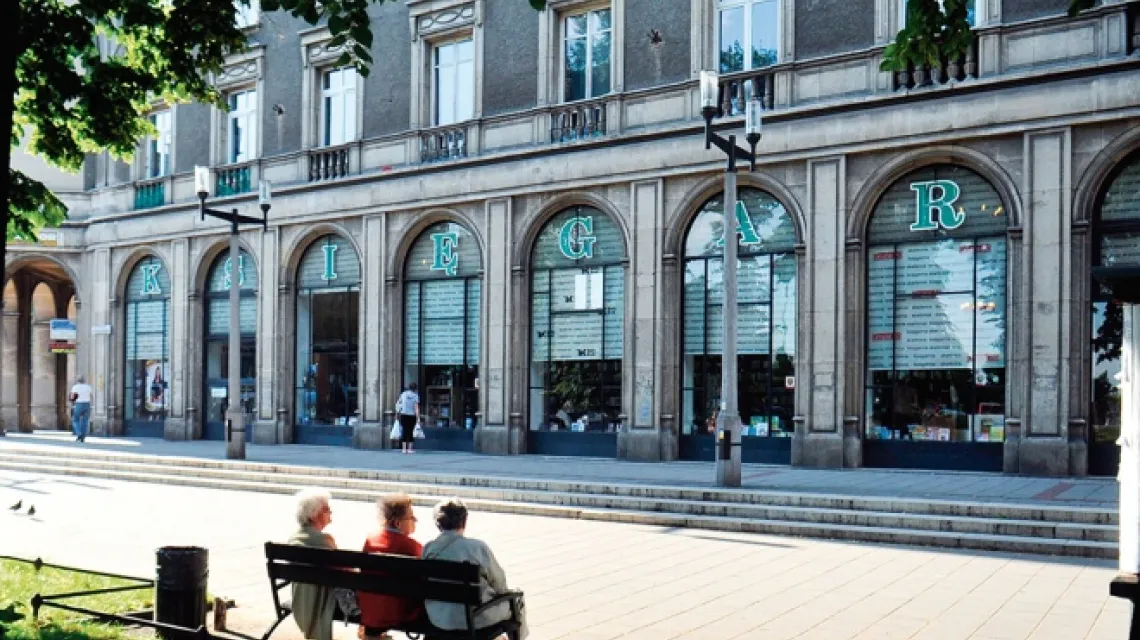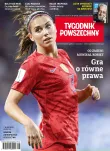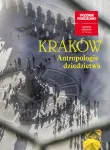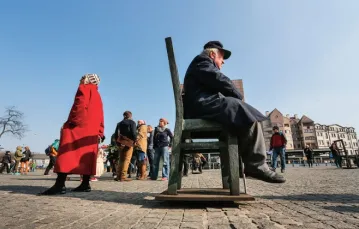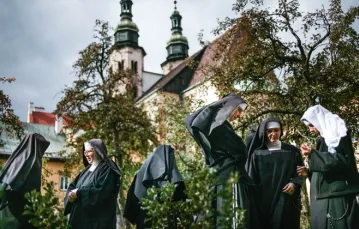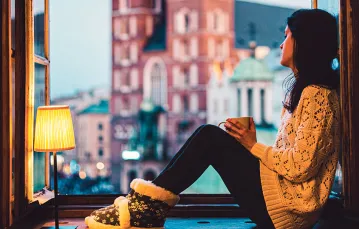Wykupienie dostępu pozwoli Ci czytać artykuły wysokiej jakości i wspierać niezależne dziennikarstwo w wymagających dla wydawców czasach. Rośnij z nami! Pełna oferta →
Renata Radłowska: Please take me around Nowa Huta.
Monika Golonka-Czajkowska: You? But you live in Nowa Huta…
Only for the last 20 years. Perhaps there are things I don’t know?
Where shall we start?
From Plac Centralny (Central Square) – everyone starts here.
I’d prefer to start from Park Ratuszowy (City Hall Park). Whenever I think about it, I see elderly men playing chess and cards at tables. They look comfortable sitting on the benches in this green enclave. The park has its regular patrons; it belongs to specific people. When I think about it, I also think about the paradoxes of history. Urban spaces are governed by chance – what would this place have looked like if Nowa Huta City Hall had been built here after all? A huge, monumental edifice befitting the new city… This park would not exist, these people would not be here today. And this was quite a plausible scenario, because we are talking about the elegant main axis of Nowa Huta.
Is it still elegant today?
Yes, I guess so. Also for those who come here from other parts of Kraków. When they get off the tram, they see something different from what they left behind. It’s true that the monumentalism of Nowa Huta does not differ that much from the Imperial Galician monumentalism of Basztowa Street, but in Nowa Huta you can see an entire panorama: the centre of the square is not overgrown with trees that would obscure the view; the Nowa Huta Meadows stretch out before you. You would not be able to find such a broad vista in the city centre.
I moved here from Kazimierz. At first, I felt bad in the old part of Nowa Huta: too much light and too much space, it was all too big and overwhelming. There are no coincidences to be found here – Nowa Huta was carefully designed and, with a few exceptions, is devoid of layers representing overlapping epochs.
But the old Nowa Huta is really in constant flux! Just look at what is going on around Plac Centralny. The Centrum E estate was built in the 1990s and does not resemble anything else around it. The food trucks in front of the Nowa Huta Cultural Centre are also a sign of this new fashion for street food that is conquering the centres of big cities. If you want to learn about the district’s past, you can hire a guide and you won’t be disappointed. Nowa Huta has the same shops as other parts of Kraków, the same banks and chain stores. There are also places that bear witness to its most recent history, such as the Solidarity Monument near the Nowa Huta Meadows, which was made from slabs produced by the steelworks.
Plac Centralny itself has indeed not changed much: its general framework remains intact, although the interior looks different. Walking towards Aleja Róż (Rose Avenue), we pass the first “phantom place” where a statue of Lenin used to stand. It’s amazing how this monument is stuck in the consciousness of local people. It still serves as a landmark: “Go to where the Lenin monument used to be and turn left”, “I’ll see you by Lenin at eight”.
But backtrack a few steps back to the Centralny milk bar. This place transcends history – it looks the same as it did in the 1970s. Whenever I visit Nowa Huta, I always have cheese dumplings there.
Have you seen the wooden chairs, the menu boards, the railings? The place has chandeliers like a ballroom – and mince cutlets to boot! And then there are the staff, who speak the same jargon, communicate in a military-style manner, and avoid entering into any friendly contacts with customers, because why would they? After all, people go there to eat, not to make small talk. It all happens just as it did in the past. People visit the milk bar for its tasty cheap meals, but probably also for its atmosphere and decor. They are buying into a convention which hasn’t been recently invented: it simply hasn’t changed. The oldest customers go there because they can afford to eat in a milk bar, and at the same time this is their free ticket back to a homely, unpretentious past.
Indeed, the place is remarkable for its ordinariness, and for this reason it also serves as a tourist attraction – a kind of a backstage pass for tourists eager to experience authenticity and get a taste of “East European exoticism”.
The Stylowa restaurant has a similar status. It once used to be a temple of gastronomy and was considered very exclusive. Today, just like the milk bar nearby, it serves a double function. Although still a meeting place for locals, it is often visited by tourists who are told that time has stood still there. Perhaps it has – or perhaps this is a deliberate play on the district’s Socialist Realist past? The milk bar on Plac Centralny is also a play of sorts, but it’s simply the theatre of life in which the actors inadvertently become stars. On the other hand, the Stylowa is full of quotations from the communist era; I remember those busts of Lenin in a place of honour in the middle of the room. But since we’re here, I’d like to ask you something: I have always wondered who used to live in those blocks of flats in the posh part of Nowa Huta. Have you not?
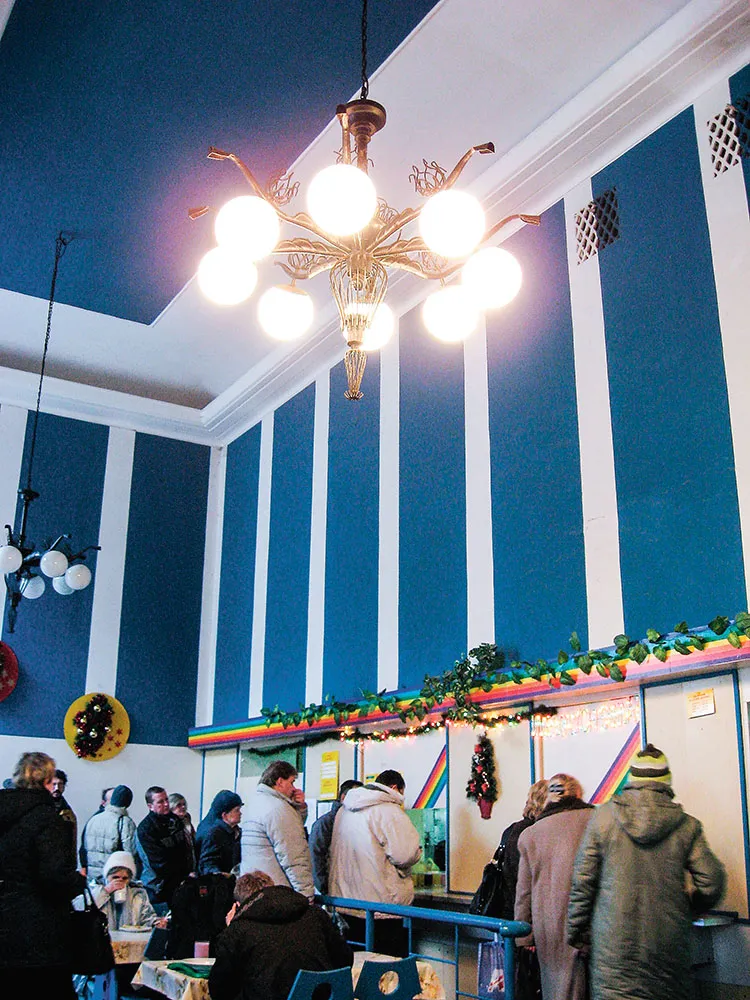
Yes, of course! There’s a story about an engineer who lived above the Stylowa and then got married and moved in with his wife, who was also an engineer. They were both important employees of the steelworks. So they were given a flat, which was small but in a prestigious location – “in the old city”. People envied them, but they never understood why, since their flat was tiny.
Once I spoke to a man who told me that flats in the best locations – on Aleja Róż and around Plac Centralny – were offered to steelworkers from Silesia who had been brought here when the plant was commissioned. They were experienced specialists, who had to be persuaded to come here. Were those homogeneous enclaves? I don’t know. But there were certainly places in Nowa Huta where the proletarian aristocracy lived.
Then then was the “Swedish block”. I went there once because I wanted to know how the district changed after Stalinism had ended. At that time, Nowa Huta ceased to be lauded by the communist authorities; in fact, after the publication of articles by Ważyk and Kapuściński, it actually became a serious image problem for the ruling elite. The modern, glazed, and colourful block of flats designed by Marta and Janusz Ingarden was a break with the heavy monumentalism of the Socialist Realist era. Built in 1957, it was a fresh breath of air, a sign of a different way of looking at the city. It was a model project like many others in Nowa Huta, which for many years served as a testing ground. The district was a giant laboratory,
And not just in terms of town planning.
Interesting solutions were introduced in the social sphere as well. One example is the modern birth centre established by Jadwiga Beaupré and the first antenatal classes held on the Willowe estate – something unknown in Poland at the time. Those institutions were also a symbol of the next stage in the life of the city – that of settling down and establishing roots.
Returning to the “Swedish block”: I once spoke to a woman who got a flat there. She told me how everyone had been waiting for that block. She did not believe that the communist authorities would give her an apartment in a block which was so fantastic and modern; she was convinced that only the management of the steelworks would live there. And yet she got an apartment.
An urban legend finally took root.
Many places in Nowa Huta became phantoms. And these phantoms were not just in the language. Just look at Park Ratuszowy – the City Hall there, which was ultimately never built, was to be modelled on the one in Zamość. Tadeusz Binek, the architect who supervised the project, wrote years later that it had not been completed due to a lack of funds.
For me, another phantom was the block of flats at No. 7 in the Zgody housing estate. A shop called Children’s World was located there, and many others too, such as the famous Scout Warehouse.
And a music shop as well.
I lived in another part of the city and, to me, Nowa Huta was synonymous with shops. I used to go there with my mum to buy things which were not available in the city centre. My mum would visit Ciżemka, which sold shoes, and Kora and Moda Polska, which sold clothes, whereas I would always go to the stationery shop. The Nowa Huta Cultural Centre always had a lot to offer, so it is probably another urban myth that Nowa Huta was a district of people who were somehow standardised to fit the uniform communist model.
And they were never alone. Thousands of other young people arrived to build Nowa Huta.
That is how the need for community life was born. People were united by their experiences of childhood and early youth in the countryside or in small towns; then they built a city and a future for themselves within it. No other place has as many pensioners’ clubs as Nowa Huta; of course, this is not about the institution itself, but rather about participation, about getting involved, getting out. Thousands of young people started from the same level and shared similar experiences; later they grew up and finally grew old together. Their social habits have not changed.
Those tens of thousands of people who came here to build a district near Kraków are now sitting on benches by the blocks of flats where they live. And they are talking to each another. What they have in common remains so strong today that they still feel the need to be close in their old age. There are three people sitting on a bench and a fourth one joins them. It is a bit of a squeeze now, but a fifth can be accommodated too. There is no distance, but rather physical closeness. As they are calmly chat and gossip, children are playing somewhere nearby. You won’t see such a image anywhere else in Kraków. They have shared memories of building the city. Once they used to drink, fight, and misbehave. Debauchery and promiscuity, as Ważyk wrote in his “Poem for Adults”.
Just imagine: thousands of young people come to a construction site, to a place where there is basically nothing. They have been uprooted from their rural communities. Around them is naked earth, but they have dreams and a faith in their own power, effectively reinforced by government propaganda.
Yes, they do misbehave – after all, they’ve been thrown into a human cauldron, and everyone wants to make their mark and fight for a better future. I refer to this period in their lives as an extended bachelorhood, a transitional phase. In their villages, nobody would have noticed, but in Nowa Huta, this happened on a macro scale. Later, they became construction workers or got jobs in the steelworks, settled down, matured, and started families. A new, heterogeneous community was born. Moreover, they colonised a space already planned and developed for them; they had to submit to its rules, but they also modified it themselves. They tried to adapt to the rules of their new urban life with its good and bad sides. Still, I think that the good sides outnumbered the bad in that first period. We must remember that Nowa Huta offered them social advancement and a sense of stability, and this must have been extremely important for a generation which survived the German occupation and the chaos of the immediate post-war years.
So why was that social advancement subsequently reversed? The 1990s were a bad time for Nowa Huta: it became a symbol of social marginalisation. This is how Kraków thought of its eastern district.
But first we have to look at who actually lived in Kraków – in the centre of the city. It was the middle class, for whom Nowa Huta was mentally alien – politically, socially, and economically unacceptable. The period when Nowa Huta was built was a difficult one for Kraków. The communist authorities claimed that they were building a model city – it was no longer Kraków that was the centre of the universe, but the new district on its periphery. Kraków imagined Nowa Huta to be a communist hotbed, a place where the barbarians lived. Two images overlapped: that of a communist city and that of savage invaders from the East.
Nowa Huta was also said to be the largest village in Poland. That is how the stereotype of a place inhabited by “peasants” was born. In my view, our dislike of Nowa Huta is a result of our national inferiority complex – we feel that we’re country of boorish yokels who aspire to be lords.
When did these settlers become city dwellers?
This happened when they started to adapt their lives to the rules of the city and of the steelworks. In one of her works, the late Anna Zadrożyńska, an excellent ethnographer, explained the difference between workers in the city and people in the countryside. When a person moves to the city, he or she starts living by a different rhythm, dividing his or her time between work and leisure time after work, and trying to use the latter differently. Farmers, by contrast, divide their time into everyday life and holidays, because they have no place for “leisure time” after work as we understand it. In Nowa Huta, the workers started operating in a new urban mode. This was something that changed their lives radically. And then the first generation of Nowa Huta natives was born – the new locals.
But they did not go to Kraków. They felt that Nowa Huta was enough for them.
They got small allotments from their employer and spent their free time there as a substitute for country living. They would sit on the banks of the Zalew Nowohucki (Nowa Huta Reservoir), go to the cinema or go to a restaurant. In those Nowa Huta establishments, two cultures met – that of the city restaurant and that of the country tavern.
The newcomers gradually learned how to drink coffee –in the Stylowa restaurant, for instance.
Or is this an urban myth?
I don’t think so. The waitresses who worked at the Stylowa from the outset told me about this process of education. First, they learned the taste themselves. It was unbearably bitter, but they tried and tried until they got used to it. Later, this secret knowledge about coffee – that it can be served with sugar or with milk and sugar; that you should drink it slowly, savour it, and that it certainly requires an elegant cup – was passed on to members of the youth work brigades. The beginnings were difficult. Some added sugar, stirred the coffee, and downed the cup in one gulp; others emptied half the sugar bowl into it to kill the bitter taste.
At first, the restaurants and cafés were frequented by the professional elite, those who operated open hearth furnaces – “the real steelworkers”. But did they really go to the Stylowa? They certainly visited the Feniks on św. Jana Street in the Old Town of Kraków, and sometimes also the Europejska at the Mogilskie Roundabout.
And members of the youth work brigades would dry their washing in front of apartment blocks.
This is one of those images that we associate with Nowa Huta: bleached sheets drying in the sun on lawns in front of apartment blocks. There are also other, possibly spurious stories: that they kept hens and pigs in their apartments, and that someone grazed his cow in front of an apartment block. There are photographs by Wiktor Pental which show this face of Nowa Huta, but I think that the cows in fact belonged to the people who had lived there before the district was built and whom the communist authorities had failed to evict from their land.
Nowa Huta means motion.
And commotion. Because where there are young people, there is always motion. Later, the city calmed down. Subsequent generations were increasingly mobile and the plant ceased to be a monoculture. Today, Nowa Huta is a dormitory town from which people tend to drive to work or to school in other parts of Kraków.
Which group is fading from our memory?
Those who predated Nowa Huta, the original inhabitants. The villages on which the city and the steelworks were built used to supply old Kraków with fruit and vegetables and served as its granary for centuries. There was a strong folk movement there, strong traditions.
Nowa Huta destroyed those communities. The settlers and the original inhabitants stood on the opposite sides of the barricade. I remember a story recounted to me by a Romani woman. She was repeatedly told that she was to stay away from the farms because the villagers would kidnap her and beat her to death. That was exactly what the newcomers said about the locals here – do not approach them or they will kill you. The villagers, in turn, whose fields, gardens, and orchards were rapidly shrinking, absorbed by the city and the steelworks, saw the youth work brigades and steelworkers as those responsible for their tragic fate, and thus treated them as barbaric invaders.
And then one day, the settlers demanded a church. In a city that was supposed to be without God. Did God follow in their footsteps from the countryside?
“A city without God” was one of the most popular periphrases used to describe the beginnings of Nowa Huta. Father Józef Gorzelany, who coordinated the construction of the Ark of the Lord, the first church to be erected in the new district, used it frequently. In the symbolic universe of Nowa Huta memory, there are several strategic places and events which are connected in various ways to the religious sphere. Two of these are especially important – the Nowa Huta Cross and the Ark of the Lord Church.
The phrase “battle for the cross” refers to the events of April 1960. At that time, there was no chance whatsoever that a new church could be part of the city’s development plan. This does not mean, however, that the settlers who arrived in Nowa Huta were prevented from engaging in religious practices. They attended Sunday mass at five churches located within the boundaries of their district.
But they wanted their own church rather than the ones they found there.
The conflict over the church was waged not just between the highest church and state authorities, but also involved local inhabitants. For most of them, the “battle for the cross” was probably the first such clear-cut and shocking confrontation with the oppressive system. This confrontation was all the more unexpected because, although Nowa Huta was supposed to be a model socialist city, it was also subject to the unwritten rules of cultural sensitivity, which governed relations between the rulers and the ruled. The settlers could practice their faith so long as those practices were limited to private spaces or pre-war churches and chapels.
However, when the most important Christian symbol – a tall wooden cross announcing the construction of a new church – was erected by the faithful in the central part of the district, the result was a semantic collision which proved unacceptable to the authorities. Paraphrasing Michael Herzfeld, discretion, which is the guiding principle of cultural sensitivity, was not observed and the secret was revealed. The attempt to remove the cross resulted in the hidden conflict coming to the surface and being reinforced and painfully felt by all the witnesses to those events.
Nowa Huta likes to talk about that conflict. It was the first of its proud achievements.
That episode provided an alternative to the story about the dark beginnings of the socialist city. It became its new founding myth.
Members of the youth work brigades became heroes. They experienced social advancement.
Another central figure in Nowa Huta’s history that is connected to the religious life of the district’s inhabitants is the Ark of the Lord Church, which harks back to the most turbulent period in the history of the city, i.e. the late 1970s and early 1980s. The Lord’s Ark was the popular name given to the Church of Our Lady Queen of Poland, the first church built in the new district and considered by locals to be one of its most important landmarks. The dramatic events which took place in Nowa Huta during martial law have not only been preserved in the memory of witnesses; they are also present in the “post-memory” of younger generations.
Let us go back to the late 1960s when the project started. Its happy ending exposed the weakness of communist ideology and the programme of building an atheist society. The metaphors of Nowa Huta as “a city without God” and “a red sea”, which were first introduced into discourse by Father Józef Gorzelany who headed the parish where the church was to be built, were in line with the “black legend” of the district, which I mentioned at the beginning.
Why the Ark?
Let us cite the words to Father Gorzelany: “From the very start, I thought that it must be an ark, it must be a boat because Nowa Huta had become a red sea. I mentioned this to Cardinal Wojtyła. I said that we needed to build a boat in the middle of the red sea”.
The starting point for this idea, however, was not so much the story of the people of Israel crossing the sea but rather the story of the Flood, interpreted in a peculiar way. Its finale was to be the spiritual revival of the district, the re-creation of the city, but this time according to rules laid down by God. The ambivalent symbolism of water in the Bible – water could both kill and renew – was adapted to the political context, in which the “red sea” was associated with communism (popularly known as the “red plague”) and the Soviet Union (the “Reds”). According to the Christian exegesis, the Ark in Nowa Huta was to serve as a shelter for the righteous; it was built according to God’s instructions and as a symbol of salvation in Christ.
When the church was consecrated, it had been raining for several days. Things became symbolic.
Cardinal Wojtyła commented on the downpour in his sermon, referring to the symbolism of water in the rite of baptism and in consecration. The crowd that had gathered around the Ark added what the Cardinal did not say directly. A rumour started to circulate that the city was threatened by a flood, which could only be prevented by consecrating the Ark.
In the context of the consecration ceremony, the downpour became a metaphysical sign, a harbinger of a new flood, but at the same time a symbol of a great breakthrough, the coming of the end of this world and simultaneously the beginning of its renewal. It was a sign of the destruction of the modern Babylon – a communist city – and a symbol of the birth of a city built in accordance with the divine plan on the model of the New Jerusalem.
In the 1980s, the Ark was also sailing in troubled waters.
The area around the church became an arena of an open struggle between the protesters who identified with the ideals of the “Solidarity” movement and the communist police. On 13 October 1982, Bogdan Włosik, a 20-year-old employee of the steelworks, was killed just a few dozen metres from the church.
The invincible city.
From the perspective of the myth of the invincible city, the newly-constructed Ark became a Christian fortress assaulted by the dark forces of communist evil. In this context, the Ark is, above all, the main locus of the story about the belligerence of Nowa Huta – a workers’ district which became a symbol of resistance to the communist regime.
The history of Nowa Huta is a complex one: at the very beginning of the district’s existence, a passive and thoughtless mass first became a victim and then an active opponent of a despotic system. It is not surprising, therefore, that the memory of defending the cross and the events which surrounded the history of the Ark of the Lord have now become the memory of a considerable part of the district’s inhabitants. They have forged an image of themselves on the basis of that memory.
Nowa Huta itself was gradually transformed from an “abyss”, awaiting heavenly punishment, into “a glorious new city sent from heaven to earth” to use the biblical formulas quoted by Vladimir Toporov. ©
Interview by RENATA RADŁOWSKA
DR HAB. MONIKA GOLONKA-CZAJKOWSKA is an ethnologist. She is a researcher at the Jagiellonian University’s Institute of Ethnology and Cultural Anthropology and is the author of the book Nowe miasto nowych ludzi: Mitologie nowohuckie (A new city of new people: Nowa Huta mythologies). She is a member of the HERILIGION research team.
RENATA RADŁOWSKA is a journalist working for Gazeta Wyborcza.
KRAKÓW. ANTROPOLOGIE DZIEDZICTWA – CZYTAJ CAŁY DODATEK SPECJALNY >>>
KRAKOW. ANTHROPOLOGIES OF HERITAGE – READ MORE IN ENGLISH >>>
